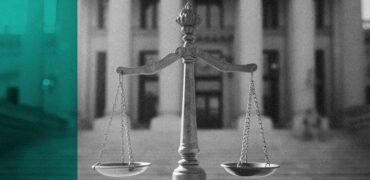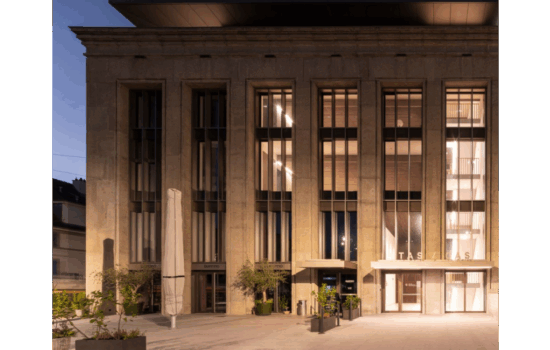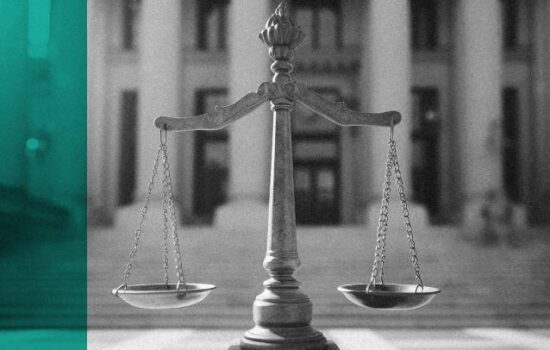Insolvency is that state of the debtor’s patrimony that is characterized by the insufficiency of funds available for the payment of certain, liquid and due debts and which is presumed when the debtor, after 60 days from the due date, has not paid his debt to the creditor, the presumption being relative.
It is known that the debtor in financial difficulty, in whose case this state of insolvency is imminent, has the possibility to formulate a request to open insolvency proceedings before the competent court. According to art. 120 of the Code of Civil Procedure, requests in the matter of insolvency or preventive arrangement are under the exclusive jurisdiction of the court in whose jurisdiction the debtor is based.
Therefore, according to art. 66 para. (1) from Law no. 85/2014, the debtor in a state of insolvency is obliged to address a request to the court to be subject to the provisions of this law, within a maximum of 30 days from the appearance of the state of insolvency. The proof of the notification of the competent fiscal body regarding the intention to open the insolvency procedure will be attached to the application addressed to the court.
This article also establishes a mandatory term within para. (10), which must be respected by the courts on the occasion of establishing the first court term and judging the request to open the insolvency procedure. Therefore, the debtor’s request will be judged urgently, within 10 days, in the council room, without summoning the parties. By exception to the provisions of art. 200 of the Code of Civil Procedure, regarding the verification of the application and its regularization, the syndic judge will set the trial term in the council chamber, within 10 days of submission, even if the application does not meet all the legal requirements and not all are submitted the documents.
The situation means that these provisions, although they are clear and predictable, end up being disrespected in practice, a matter that can lead to the generation of additional damages to a company on the verge of insolvency. This is unfortunately the situation of a company which, considering some tax obligations that exceed the amount of 8 million lei, requested the opening of the insolvency procedure as early as 26.06.2023. This request, although it was registered on the roll of the competent court, has been ignored for almost a month, since a first court term has not been established in the case.
The repeated attempts of the conventional representatives to ask the court to set a first trial date proved to be useless, since the court expressly refuses to set a first trial date, referring to a decision of the general assembly of judges regarding to the protest adopted by the magistrates.
From what has been presented, it emerges that the court in question has suspended judicial activity by ignoring the law. The legal term for opening the insolvency procedure is imperative and, according to the principle of legality, the decisions of the general assembly of judges cannot contravene the law and are unenforceable to individuals. In other words, the decisions of a general assembly of judges have a lower force than the law and cannot change the legal provisions.
The obligation of the court in the present case was to set a first court date within 10 days of receiving the request, as provided by art. 66 para. (1) from Law no. 85/2014, considering the fact that the debtor’s request is judged urgently. Moreover, in a similar file, with an identical object and registered later, on 6.07.2023, the same court fixed a first court date for 19.07.2023, an aspect that confirms the reasoning presented previously, regarding the establishment of the first court term in case of insolvency proceedings.
The consequences that fall on the company in question are related to its forced execution, since, until the insolvency procedure is opened, the company cannot successfully rely on the provisions of art. 75 of Law no. 85/2014. According to art. 75 para. (1) from Law no. 85/2014, from the date of the opening of the procedure, all judicial, extrajudicial actions or enforcement measures for the realization of claims on the debtor’s assets are automatically suspended. The exploitation of their rights can only be done within the insolvency procedure, by submitting applications for the admission of claims.
Therefore, the company in question is in the situation where it submitted a request to open the insolvency procedure within the deadline and, due to the fact that a first court date is refused, it continues to be enforced, without having the possibility to successfully prevailed on the suspension of enforcement after the opening of insolvency. Practically, indirectly and unjustifiably, the company is denied the resolution of the request to open the insolvency procedure, an aspect which, obviously, generates some damages that are difficult to overcome.
The natural question is related to who and how is responsible for these damages and whether the law provides for any possible solution in the situation where a private individual is the victim of the deficient functioning of a public service.
The administrative code comes with sufficient remedies for such unpleasant situations in which the individual suffers as a result of the fact that his rights were disregarded. Thus, administrative liability represents that form of legal liability that consists of the set of related rights and obligations of an administrative nature that, according to the law, arise as a result of the commission of an illegal act that violates the rules of administrative law.
It should be noted that there are certain conditions for incurring administrative liability, as it is established depending on the form of guilt and the actual participation in the violation of the law. Moreover, administrative liability does not exclude and can be supplemented with other forms of legal liability, under the law.
Regarding the case described, administrative liability can take two forms, which aim to sanction those who are guilty of committing an illegal act during the performance or non-performance of official duties. Thus, administrative-disciplinary liability is a form of administrative liability that intervenes in the case of committing a disciplinary offense, in the sense of the violation by dignitaries, civil servants and their assimilation of the service duties and the mandatory rules of conduct provided by law.
Disciplinary misconduct is the deed committed culpably by civil servants, dignitaries and their associates, which consists of an action or inaction that violates their obligations from the service report, respectively from the exercise of the mandate or in connection with it and which affects them socioprofessional and moral status.
Of course, in the case of magistrates, disciplinary liability is regulated by separate laws, namely Law no. 317/2004 and Law no. 303/2004. The Superior Council of the Magistracy fulfills, through its sections, the role of a court in the field of disciplinary liability of judges and prosecutors for the acts provided by Law no. 303/2004. Thus, it should be noted that magistrates are subject to disciplinary liability for deviations from official duties, such as repeatedly and for imputable reasons not complying with the legal provisions regarding the expeditious resolution of cases or the unjustified refusal to perform an official duty.
It is also provided by Law no. 303/2004 the fact that the state is patrimonially liable for damages caused by judicial errors. The liability of the state does not remove the liability of magistrates who exercised their office in bad faith or with gross negligence. The injured person’s right to reparation of material damages caused by judicial errors committed in other than criminal processes can only be exercised if the criminal or disciplinary liability, as the case may be, of the magistrate has been established in advance by a final decision for an act committed during the trial and if this act is likely to cause a miscarriage of justice.
In order to repair the damage, the injured person can bring an action only against the state, represented by the Ministry of Finance. After the injury has been covered by the State under a final judgment, the State may bring an action for damages against the judge or prosecutor who, in bad faith or gross negligence, committed the miscarriage of justice causing the injury. It should be noted that the limitation period for the right to action in all cases presented above is one year.
Therefore, for the recovery of the patrimonial damage generated by a judicial error, the individual can turn against the state, based on the administrative-patrimonial liability. This form of administrative liability consists in obliging the state or, as the case may be, the administrative-territorial units to repair the damage caused to a natural or legal person by any judicial error, for the limits of the public service, by an illegal administrative act or by the unjustified refusal of the administration public to resolve a request regarding a right recognized by law or a legitimate interest.
The conditions for the exclusive liability of public authorities and institutions for damages of a material or moral nature caused as a result of organizational or functional deficiencies of some public services are provided for in art. 574 of the Administrative Code. Thus, public authorities and institutions are exclusively liable for damages of a material or moral nature caused as a result of the organizational or functional deficiencies of some public services with the fulfillment of the following conditions:
a) the existence of a public service which, by its very nature, contains the risk of producing certain damages for the beneficiaries;
b) the existence of a material or moral damage, as the case may be, of a natural or legal person;
c) the existence of a causal link between the use of a public service which by its nature contains the risk of causing certain damages and the damage caused to the natural person or, as the case may be, the legal person.
Administrative-property liability can only be engaged when the contested administrative act is illegal and causes material or moral damage to the individual, it being necessary to have a causal relationship between the illegal act and the damage caused by the fault of the public authority or its staff.
Returning to the company that requested, apparently in vain, the opening of the insolvency procedure, the illegal act or, rather, the illegal administrative act is represented by the refusal of the court to fix a trial term, although numerous requests were registered in this regard. According to art. 2 para. (2) from Law no. 554/2004, the unjustified refusal to resolve a request related to a right or a legitimate interest or, as the case may be, the fact of not responding to the requester within the legal term is assimilated to unilateral administrative acts.
Therefore, the refusal to resolve the debtor’s request to open the insolvency procedure is an illegal act that entitles the debtor to resort to the administrative-property liability procedure and to turn against the state for the damages they suffer as a result of the fact that the public service of justice, in this case, shows the existence of some deficiencies.
This article was prepared, for the blog of the civil society of lawyers Costaș, Negru & Asociații, by Bogdan Ioan Mihai Șuta, lawyer and Andrei Fătu, lawyer, both from the Cluj Bar Association.
Costaș, Negru & Asociații is a civil society of lawyers with offices in Cluj-Napoca, Bucharest and Arad, which offers assistance, legal representation and consultancy in several areas of practice through a team composed of 17 lawyers and consultants. Details regarding legal services and team composition can be found on the website https://www.costas-negru.ro. All rights for the materials published on the company’s website and through social networks belong to Costaș, Negru & Asociații, their reproduction being permitted only for informational purposes and with correct and complete citation of the source.













